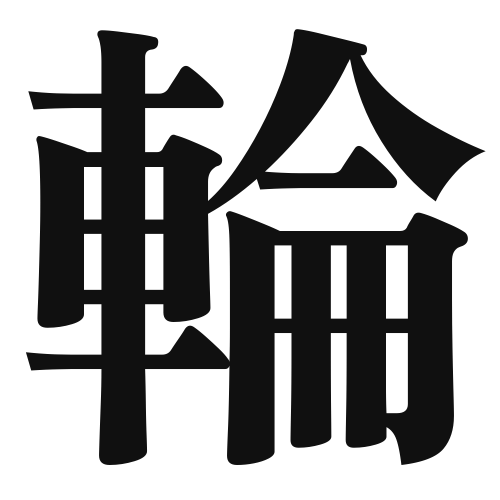1. Overview of Meaning
The kanji “輪” (pronounced “wa” in Japanese) means “ring” or “circle.” It represents the concept of something that is round or cyclic, often symbolizing unity and continuity.
2. Formation and Radical
Formation of the Kanji: The kanji “輪” is a compound character, made up of two parts: the radical “車” (meaning “car” or “wheel”) and the phonetic component “輪” (which also relates to the concept of a circle). This character can be classified as a compound ideograph since it combines both meaning and sound.
Radical: The radical of “輪” is “車,” which is associated with vehicles and wheels, reinforcing the idea of circularity and movement.
3. Examples of Usage
Common Words and Phrases: Some frequently used words that include “輪” are:
- 輪郭 (りんかく, rinkaku) – outline
- 輪ゴム (わごむ, wagomu) – rubber band
- 車輪 (しゃりん, sharin) – wheel
Example Sentences in Daily Conversation:
- この輪ゴムはとても便利です。 (This rubber band is very useful.)
- 彼の絵には美しい輪郭があります。 (His painting has a beautiful outline.)
4. Synonyms and Antonyms
Similar Kanji: A similar kanji is “環” (かん, kan), which also means “ring” but often refers to a more abstract concept, such as a circle of people or a community.
Antonyms: An antonym for “輪” could be “角” (かく, kaku), meaning “corner” or “angle,” which represents sharpness and discontinuity, contrasting with the smoothness of a circle.
5. Cultural and Historical Background
Relation to Japanese Culture: In Japanese culture, circles often symbolize harmony and completeness. The concept of “wa” (和), which means harmony, is closely related to the idea of a circle.
Proverbs and Idioms: One common proverb is “輪をかける” (わをかける, wa o kakeru), which means to enhance or to add to something, often used in the context of improving a situation or making it more complete.
